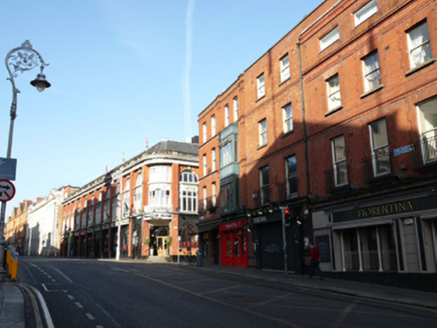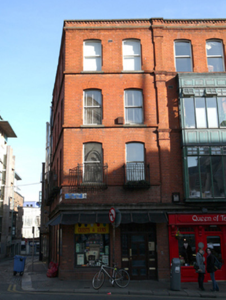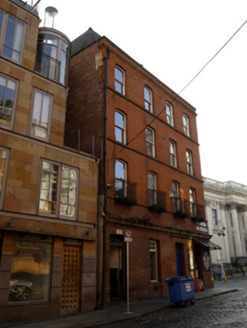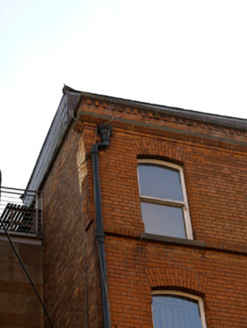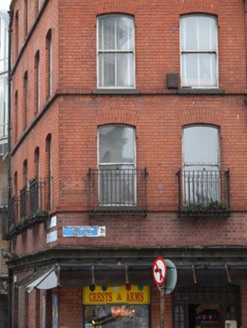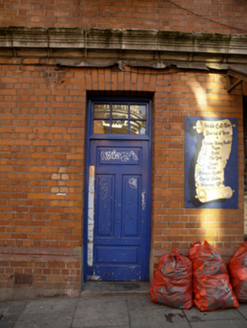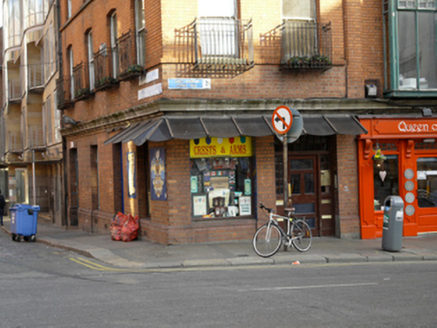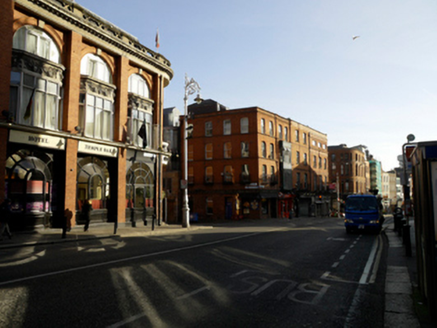Survey Data
Reg No
50020018
Rating
Regional
Categories of Special Interest
Architectural, Social
Original Use
Apartment/flat (purpose-built)
Historical Use
Shop/retail outlet
In Use As
Shop/retail outlet
Date
1870 - 1890
Coordinates
315421, 234032
Date Recorded
22/03/2015
Date Updated
--/--/--
Description
Corner-sited attached two-bay four-storey commercial and residential building, built c.1880, having four bays to Exchange Street Upper. Now with recent shopfront to front (south) elevation and apartments above. Flat roof behind red brick parapet with dentillated red brick cornice and render coping. Recent roof structure to rear (north) elevation. Cast-iron rainwater goods. Render and moulded red brick cornice over red brick walls laid in Flemish bond having red brick plinth course with moulded terracotta capping, and carved stone cornice to ground floor. Segmental-headed window openings having chamfered reveals, cut granite sills and one-over-one pane timber sliding sash windows, with continuous brick sill courses. Square-headed window openings to ground floor and shopfront with replacement windows. Square-headed door openings to west elevation having timber panelled doors, overlights, and limestone thresholds. Square-headed door opening having glazed timber door and glass canopy to shopfront. Situated on north side and west end of Cork Hill and south end of Exchange Street Upper.
Appraisal
This building retains much of its early fabric, seen particularly in the brickwork and windows, which adds to the character of the streetscape. Moulded red brick is used to good effect to articulate the facade. Built as a single structure with its neighbor to the east, it shares parapet height, fenestration arrangement, detailing and construction materials, lending a sense of continuity to the group. Cork Hill is a significant historic thoroughfare with some fine eighteenth-century buildings and early stone paving. As the principle entrance to Dublin Castle, Cork Street has been the backdrop to many important historical events. It is at the centre of two major urban interventions, Dame Street which was laid out by the Wide Street Commissioners in 1778 and Lord Edward Street which was created in 1886 to connect Cork Hill to Christ Church Cathedral.
